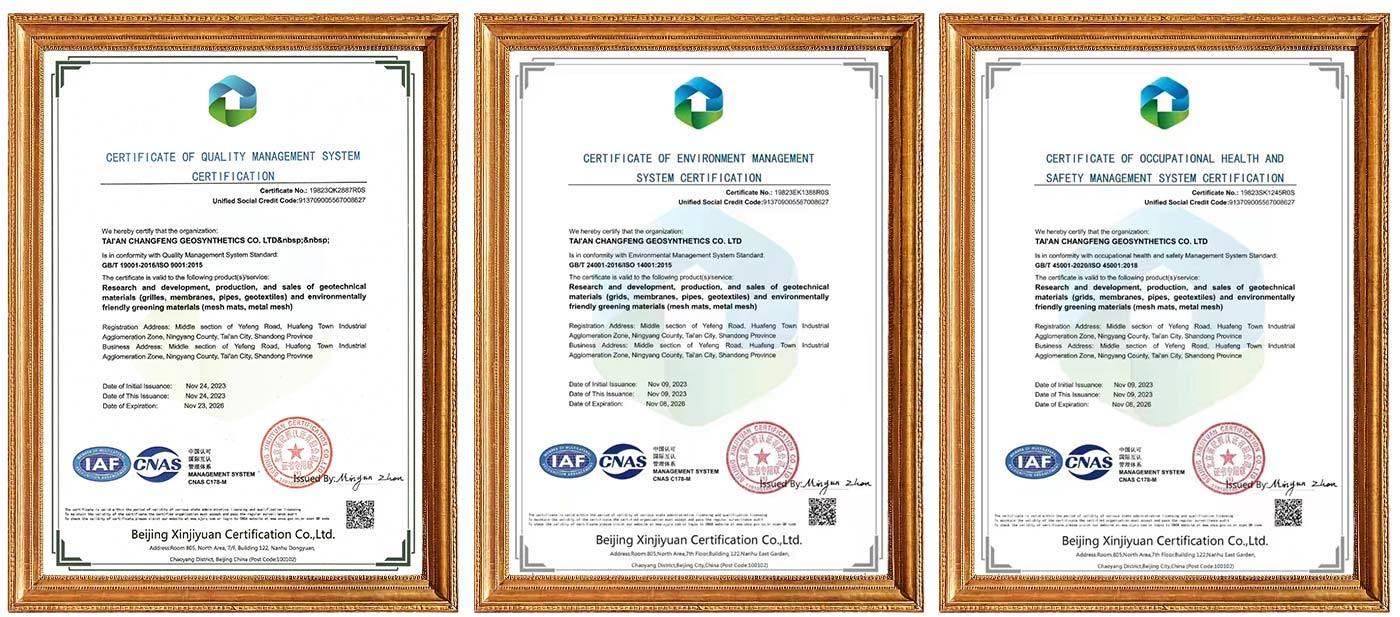
Mining engineering Geocomposite
Subclassification:
Geocomposite
Key words:
Geocomposite
Email:
WhatsApp:
Product Details

Composite geosynthetics are composite materials composed of soil and other auxiliary materials. It is usually composed of soil and reinforced or improved materials (such as fibers, bentonite, clay minerals, chemical additives, etc.), and is made through mixing, compaction, solidification and other processes.


Composite geotechnical materials have multiple functions and advantages. Firstly, it has good tensile and compressive strength, which can enhance the mechanical properties of soil, improve its bearing capacity, seismic and liquefaction resistance. Secondly, composite geotechnical materials can improve the engineering properties of soil, such as enhancing its impermeability, anti slip and stability, reducing soil settlement and lateral deformation. In addition, composite geotechnical materials have good durability and corrosion resistance, and can cope with different environmental conditions and engineering requirements.
The application fields of composite geotechnical materials are very extensive. In basic engineering, it can be used for soil reinforcement, foundation treatment, slope protection and other engineering projects. In transportation engineering, it can be used in ground engineering such as roads, railways, and airport runways. In hydraulic engineering, it can be used in projects such as embankments, dams, and revetments. In environmental engineering, it can be used in projects such as landfills and waste disposal sites. In addition, composite geotechnical materials can also be applied in multiple fields such as mining engineering, tunnel engineering, and marine engineering.
In summary, composite geotechnical materials are an important civil engineering material with multiple functions and application advantages, which are of great significance for improving the engineering performance of soil and enhancing the stability of engineering structures.

| Property | unit | BC50/D200 | BC63/D200 | BC70/D200 | BC80/D200 | Test Standard | |
| Geocomposite specification | |||||||
| Hydraulic conductivity(MD) |
M²/s | 2.8×10-3 | 3.2×10-3 | 4.0×10² | 5×10-3 | ASTM D4716 | |
| Puncture | KN/m | 0.17 | 0.17 | 0.17 | 0.17 | ASTM D7005 | |
| Resistance | |||||||
| Core Material Geonet Specification | |||||||
| Thickness | mm | 6.3 | 7.0 | 8.0 | 9.0 | ASTM D5199 | |
| Density | g/cm³ | 0.94 | 0.94 | 0.94 | 0.94 | ASTM D1505 | |
| Carbon Black Content | % | 2 | 2 | 2 | 2 | ASTM D1603 | |
| Tensile strength (MD) | KN/m | 8.0 | 10.0 | 12.0 | 14.0 | ASTM D7179 | |
| Geotextile Specification | |||||||
| Unit weight | g/m2 | 200 | 200 | 200 | 200 | 200 | |
| Geotextile type | Continuous filament non-woven geotextile | ||||||
Honor

MESSAGE



